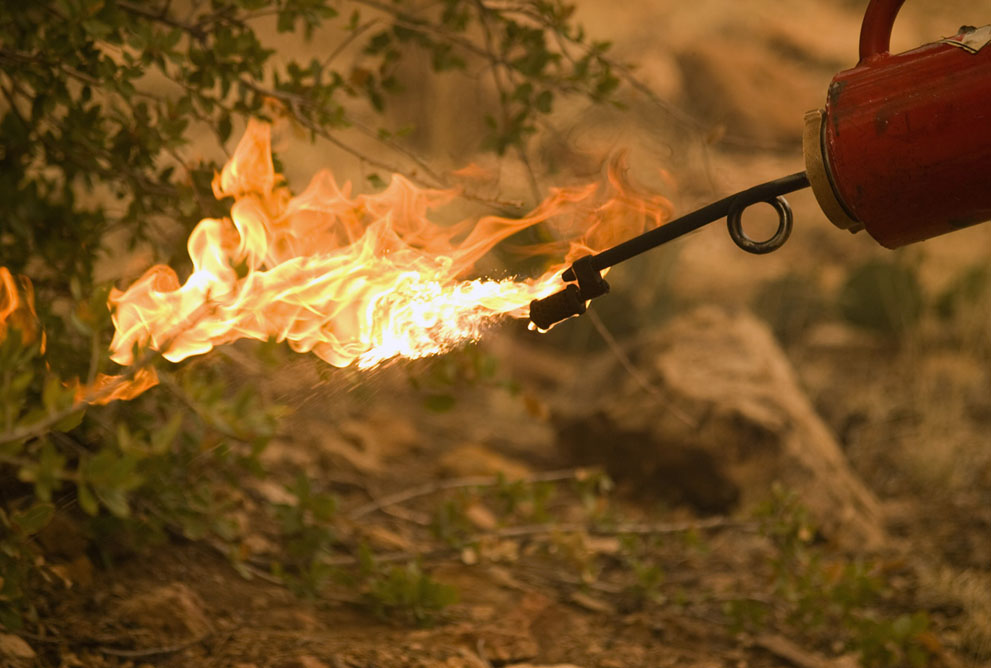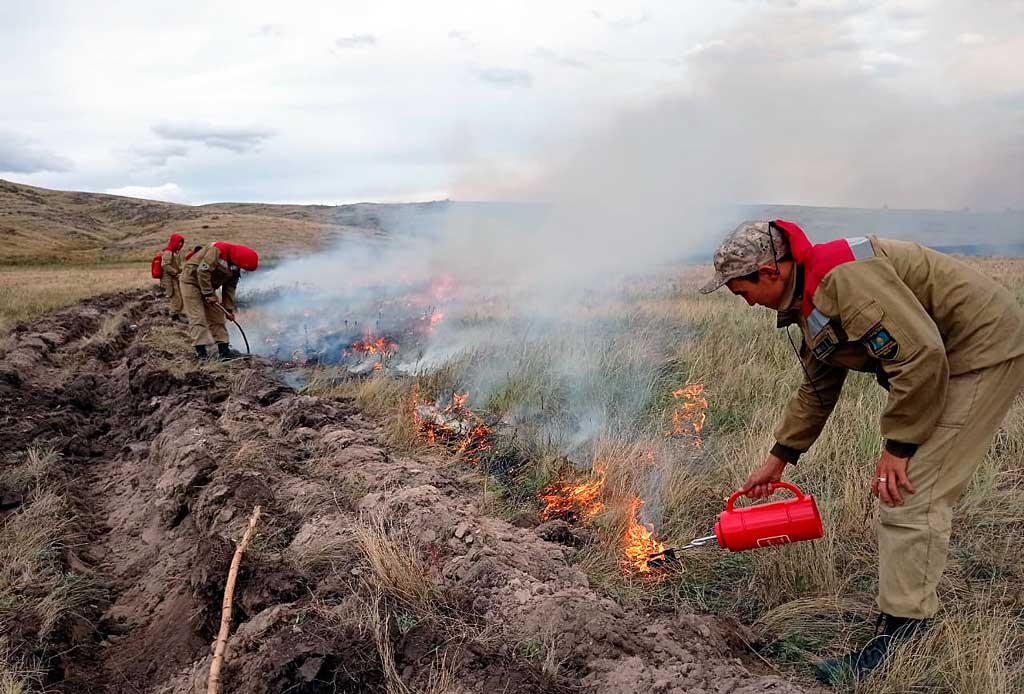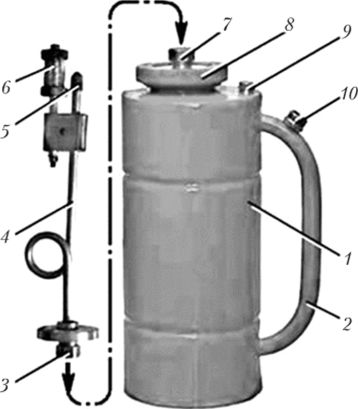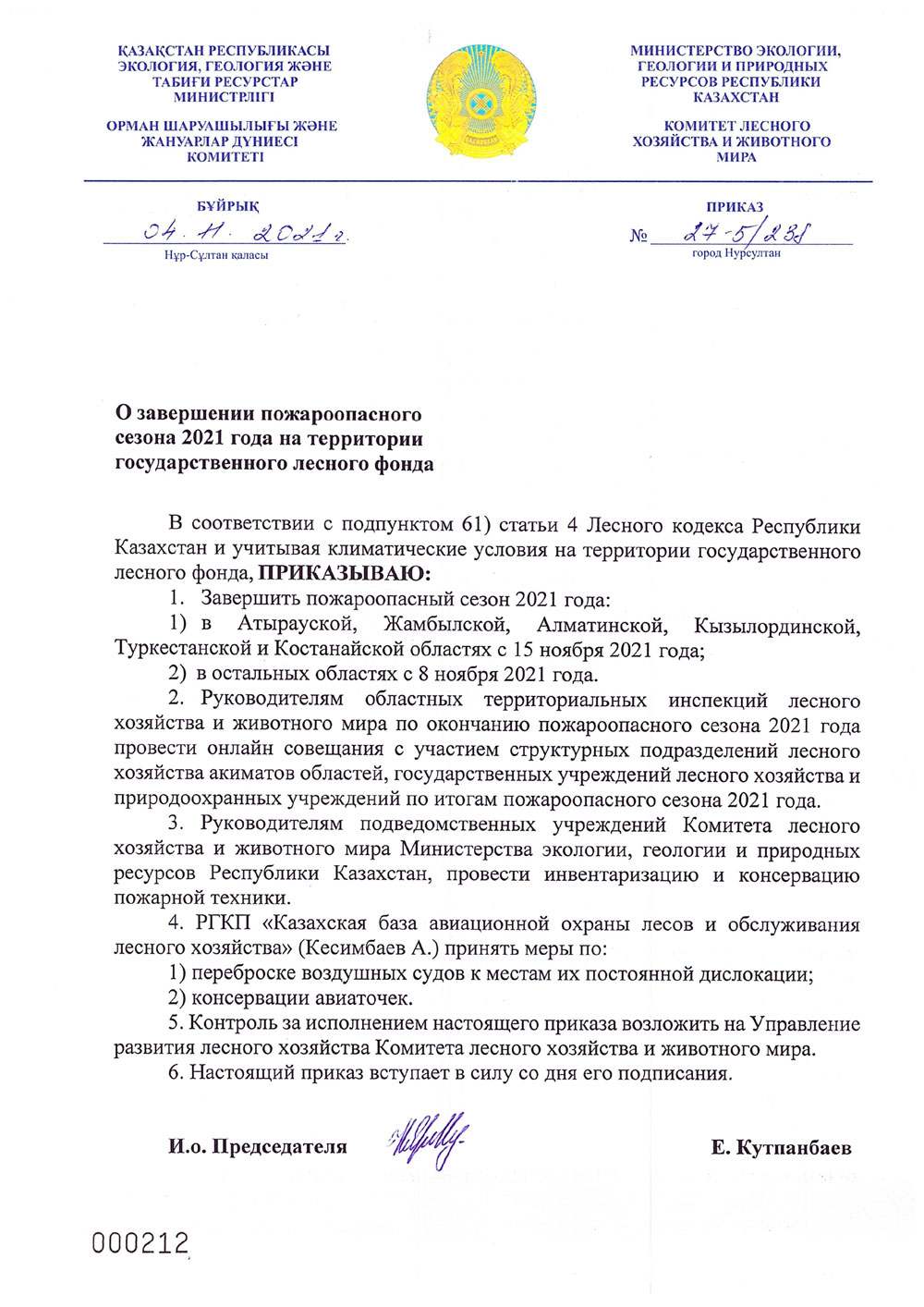GETTING TO KNOW THE NATURE OF THE NATIVE LAND - THE TIEN SHAN BROWN BEAR
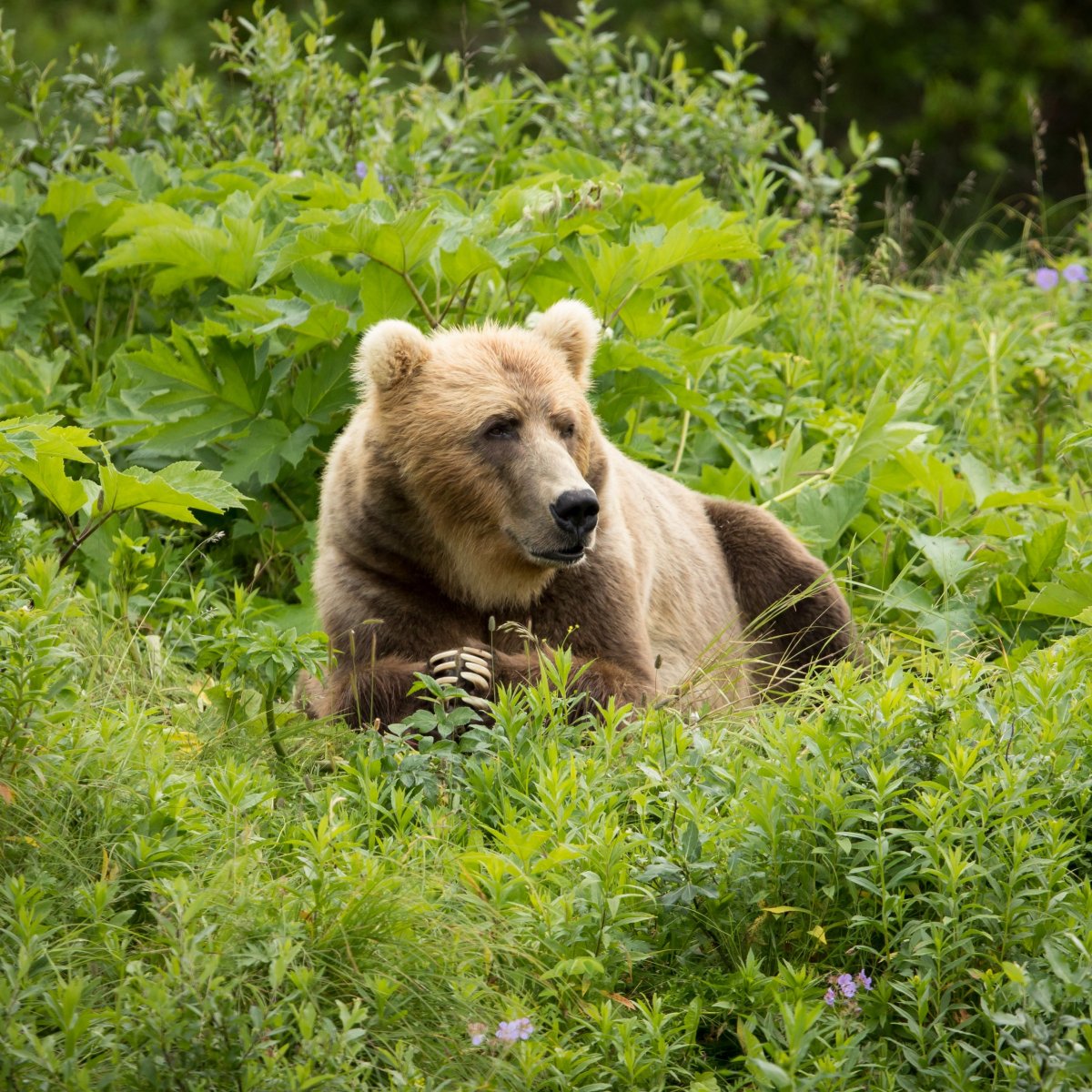 Tien Shan Brown Bear
Tien Shan Brown Bear
There are seven types of bears in the world: brown, white, white-breasted (Asian black, Himalayan), baribal (American black), spectacled, Malay and sponge. According to V. G. Heptner, there are seven subspecies of brown bear in the former USSR, which differ from each other in size, color, skull structure, and claw shape. The names of these subspecies are: Kamchatka, Ussuri, Yenisei, Central Russian (common), Caucasian, Syrian (Transcaucasian) and Tien Shan. The bear on the Tien Shan was first described in 1873 by N. A. Severtsov, giving him the name "white-footed". Currently, this name is used as a synonym for the Tien Shan bear. The Tianshan brown bear lives in the mountainous regions of Nepal, western China, northern India, northern Pakistan, and southeastern Kazakhstan. In its region of habitat, this animal is the largest mammal. In Kazakhstan, it is distributed on the Tien Shan (Karzhantau, Ugam, Talas, Kirghiz, Zailiysky, Kungei, Terskei, Ketmen ridges), as well as in the Dzungarian Alatau with peripheral mountain ranges Altyn-Emel, Toksanbai, Koyandytau, Kaikan.
 Appearance
Appearance
The size of these bears is small compared to other brown counterparts. The length of males varies from 1.5 to 2.2 meters. Females reach a length of 1.4-1.85 meters. That is, the weaker sex is somewhat smaller than the stronger. The usual weight of these bears reaches 300 kg. But sometimes there are powerful representatives of this subspecies with a body length of up to 3 meters and a weight of up to 700 kg. The claws on the front paws are long and light. The skin has a sandy or reddish-brown color. Cubs are darker than adult animals, but they lighten with age. Almost all cubs have light or reddish spots and stripes on their chests and necks, but later they disappear. Adult animals with such markings are rare. In summer, animals shed a lot. The Tien Shan bear is smaller than the Kamchatka, Ussuri, Yenisei and Central Russian, about the same size as the Caucasian and larger than the Syrian. Compared with the Central Russian, its muzzle is more shortened, the fur is sparse, the claws are less curved and more blunt, their color is lighter.
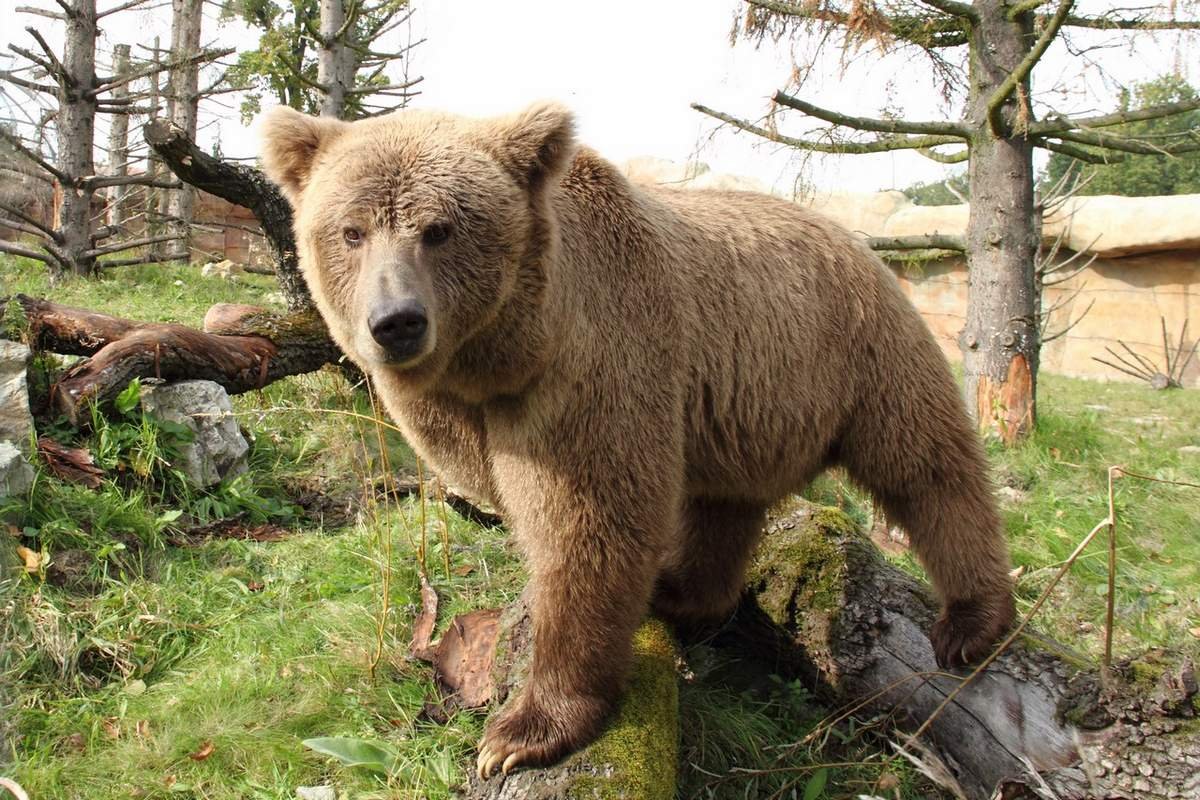 Behavior and nutrition
Behavior and nutrition
The bear walks slowly, the head is usually lowered. The beast often looks down in front of him and only occasionally - to the sides. Puts the front paws somewhat at an angle, with the toes inside. In case of danger, it instantly transforms: the movements become sharp and rapid. The running speed reaches 50 km/h. He perfectly overcomes the puzzling descents and ascents. The bear has a very sensitive nose. By the smell of a few hundred meters, the beast finds the corpses of animals. Flair helps him to avoid a dangerous meeting with a person in time. He hears well too, but he sees weakly.
In late October or early November, a permanent snow cover is established in the mountains. Since that time, Tien Shan bears have been lying in dens for hibernation. The Tien Shan bear spends four to five months in a state of winter sleep, and females with cubs about a month longer. The reason for lying in the den is quite clear – it is extremely difficult for a bear to feed in winter. For successful overwintering, the beast needs a sufficient amount of fat. When fats are oxidized, the energy necessary to maintain life is released. The Tien Shan bear almost always arranges a den in small rock niches. It very rarely lies for the winter in the roots of a tree turned out by the wind or under the thick branches of the Tien Shan spruce hanging almost to the ground. There are no known cases of a bear in the mountains digging his own den in the ground, as it happens on the plain. In winter, the air temperature in the den is several degrees higher than outside. A thick layer of nest litter also retains heat. Thick fat and subcutaneous fur have heat-insulating properties. Due to this, the energy costs of the body are reduced and fat reserves are spent sparingly. Defecation and urination stop. In females, during winter sleep, the development of embryos, childbirth, and feeding of cubs occur. A bear that has not accumulated fat by autumn and has not lain down in a den for this reason is called a connecting rod. The beast continues to wander in search of food in winter and becomes aggressive and dangerous to humans. Connecting rod bears are better known in Siberia and the Far East. There are no berries, fruits, nuts at all on a huge territory in lean years - the main autumn food of the bear. The Tien Shan bear is in a better position. In the mountains, natural conditions are more diverse and simultaneous failure of berries and fruits in all high-altitude zones at once is an extremely rare phenomenon.
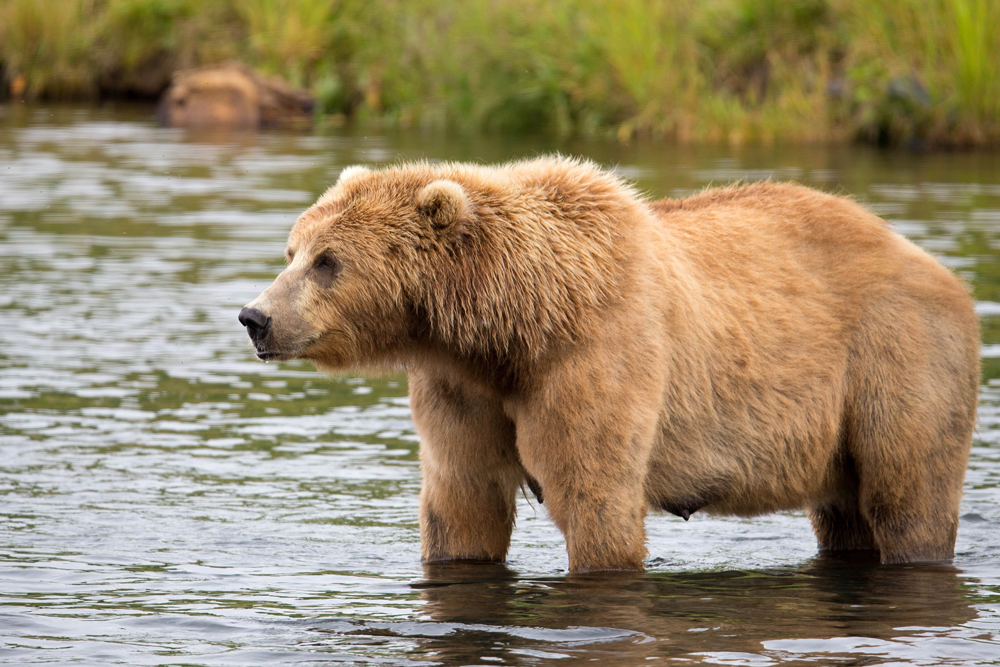 After hibernation, bears in search of food descend to the lower belt of the mountains, where they feed on last year's grass and the remains of juniper berries in the first thaw. Sometimes it feeds on the corpses of fallen animals (deer, mountain goats) - victims of avalanches, wolves, poachers. After thawing the soil, the roots of plants become available to the bear. From mid-April (or a little earlier or later), the first sprouts of eremerus, ferula, rhubarb appear. Since that time, bears do not starve. Gradually, the animals climb higher into the mountains, as fresh vegetation appears. By June, most of the animals are in the subalpine and alpine zones. "In the pasture, the bear resembles a cow. Sometimes, for several hours in a row, the beast grazes in a clearing with a diameter of only a few tens of meters. He walks slowly and chooses his favorite herbs. Once he even rolled aside a huge boulder that prevented him from eating the whole bush of the hogweed growing here" (Grachev Yu. A. Tien Shan bear. 1982. pp. 53-54). Under the rocks, the bear looks for worms, mollusks, insects. There are also anthills dug by a bear. However, not all animals include ants in their diet. In general, differences in tastes, according to Yu. A. Grachev, are sometimes noticeable even in animals from the same family. The bear usually feeds on grass all morning, goes to rest in the juniper bushes in the afternoon, and goes out to eat grass again in the evening. At the end of summer, the berries of juniper, honeysuckle, raspberry, wild cherry, currant, blackberry, hawthorn, rose hips begin to ripen. There are fewer and fewer animals in the upper belts of the mountains. They are increasingly found below – in the thickets of berry bushes. In early autumn, apples ripen – one of the bear's favorite treats. First of all, the bear picks up apples under the trees. If there are not enough of them, then he takes the fruits from the lower branches, standing on his hind legs, or climbs a tree. Until late autumn, archie and rosehip berries are well preserved on the bushes. The bear eats them before lying down in the den. Bears in the mountains constantly roam usually within one or two large river valleys. From spring to autumn, the animals manage to visit the most forage places from the foothill plain to the sources of rivers. This distance ranges from 15-20 to 40-50 km. During the year, the beast visits an area of 30 to 100 square kilometers. They do not have permanent habitats in this territory, they only stay for a while where there is food. The territory of one or two valleys is equally used by all bears living here, being common to them. Sometimes 3-5, and sometimes 15-20 animals live on it. Most of the time they are dispersed over this territory more or less evenly. When meeting with relatives, they are limited to demonstrating a threat.
After hibernation, bears in search of food descend to the lower belt of the mountains, where they feed on last year's grass and the remains of juniper berries in the first thaw. Sometimes it feeds on the corpses of fallen animals (deer, mountain goats) - victims of avalanches, wolves, poachers. After thawing the soil, the roots of plants become available to the bear. From mid-April (or a little earlier or later), the first sprouts of eremerus, ferula, rhubarb appear. Since that time, bears do not starve. Gradually, the animals climb higher into the mountains, as fresh vegetation appears. By June, most of the animals are in the subalpine and alpine zones. "In the pasture, the bear resembles a cow. Sometimes, for several hours in a row, the beast grazes in a clearing with a diameter of only a few tens of meters. He walks slowly and chooses his favorite herbs. Once he even rolled aside a huge boulder that prevented him from eating the whole bush of the hogweed growing here" (Grachev Yu. A. Tien Shan bear. 1982. pp. 53-54). Under the rocks, the bear looks for worms, mollusks, insects. There are also anthills dug by a bear. However, not all animals include ants in their diet. In general, differences in tastes, according to Yu. A. Grachev, are sometimes noticeable even in animals from the same family. The bear usually feeds on grass all morning, goes to rest in the juniper bushes in the afternoon, and goes out to eat grass again in the evening. At the end of summer, the berries of juniper, honeysuckle, raspberry, wild cherry, currant, blackberry, hawthorn, rose hips begin to ripen. There are fewer and fewer animals in the upper belts of the mountains. They are increasingly found below – in the thickets of berry bushes. In early autumn, apples ripen – one of the bear's favorite treats. First of all, the bear picks up apples under the trees. If there are not enough of them, then he takes the fruits from the lower branches, standing on his hind legs, or climbs a tree. Until late autumn, archie and rosehip berries are well preserved on the bushes. The bear eats them before lying down in the den. Bears in the mountains constantly roam usually within one or two large river valleys. From spring to autumn, the animals manage to visit the most forage places from the foothill plain to the sources of rivers. This distance ranges from 15-20 to 40-50 km. During the year, the beast visits an area of 30 to 100 square kilometers. They do not have permanent habitats in this territory, they only stay for a while where there is food. The territory of one or two valleys is equally used by all bears living here, being common to them. Sometimes 3-5, and sometimes 15-20 animals live on it. Most of the time they are dispersed over this territory more or less evenly. When meeting with relatives, they are limited to demonstrating a threat.
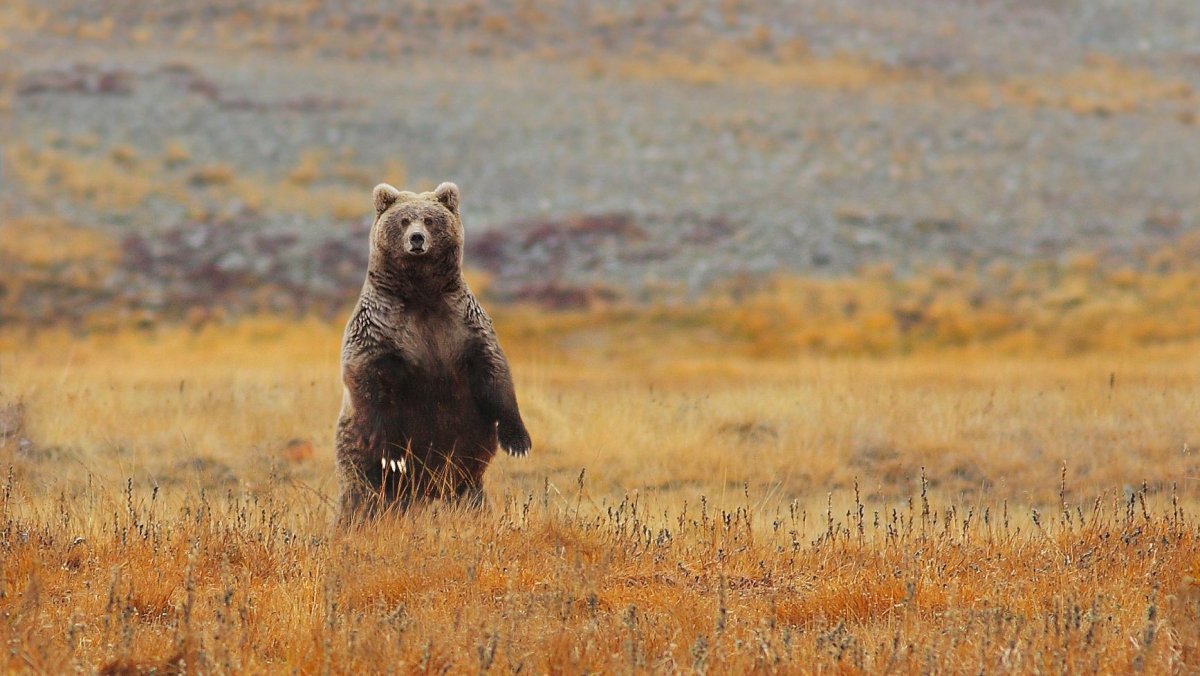 The basis of its nutrition is plant food (99% of the annual diet). Due to the high-calorie autumn food, the bear accumulates fat necessary for hibernation. Animal food is of secondary importance. According to Y. A. Grachev, the menu of the Tien Shan bear includes 110 species of herbaceous plants, 40 species of berry bushes and fruit trees and about 20 species of animals. The species composition of plants that the Tien Shan bear feeds on varies in different geographical areas. In the Dzungarian Alatau, the first place in the bear diet in autumn is occupied by apple fruits, then by honeysuckle, rosehip, dogwood, raspberry. In the Trans-Ili Alatau - fruits of apple, apricot, hawthorn, raspberry, rosehip. In the Talas Alatau – the fruits of juniper, then apple, honeysuckle, rosehip, buckthorn. On the Ugam, Pskov, Chatkal ridges of the Western Tien Shan, the bear also eats the fruits of walnuts, cherry plums, pistachios, grapes in autumn. Animal food rarely appears on the bear's menu. These are mainly invertebrates, rodents and carrion. From animals, rodents, ungulates, small predators sometimes become victims of the bear. Yu. A. Grachev observed how the bear tore up the holes of voles. He also found holes excavated by the bear of blindfolds and long-tailed marmots. He breaks groundhog burrows more often on high-altitude plateaus, leaving narrow and long trenches in their place. There are digs of gray marmot burrows dug by a bear with a meter depth and a width of 5-7 meters. Bears are showing interest in marmots already in early spring. In general, getting a groundhog out of a hole is not often a bear's luck. Often the burrows of marmots in the mountains are long, deep, go under large boulders. And, the bear, starting to dig, often throws aimless occupation. In case of danger, hares sometimes hide in groundhog burrows and it happens that the bear manages to get him out of there. It happens that a bear manages to find a wounded maral by blood (the wound can be received in a fight with another male during the rut) and suddenly attack him. Yu. A. Grachev describes one of such cases. The bear dragged its prey (and the maral weighed one and a half to two times more) into a thicket of willow a hundred meters from the bed. There he filled up the middle part of the carcass with earth. As Yu . A . notes . Grachev, the bear buries its prey primarily because it tries to hide it from other animals. In dense bushes, it is difficult for birds to detect it from the air, and if it is littered with earth, it is almost impossible to find it by smell. Zoologists observed how marals and a bear, roe deer and a bear fed on grass in one clearing. They ran away from the bear only when the neighborhood turned out to be dangerous. The bear rarely attempted to attack. Once he was seen rushing into the archie bushes, where a roe deer had just gone, but she managed to jump out and gallop away. The bear eats roe deer if the animal died in winter from lack of food or from wolves. Zoologists have never seen a bear chasing mountain goats or argali, which also sometimes feed or rest near the bear. Nevertheless, ungulates avoid close proximity to it. Zoologists once observed in April in the Talas Alatau an attempt to hunt a bear for wild boars. In October 1974, a hunter found an adult male boar killed by a bear in the Bel-Bulak gorge (Trans-Ili Alatau). The head, hind leg, part of the meat on the spine and bones remained from the prey. Following the tracks, it was established that a bear and two cubs were chasing a herd of wild boars. Occasionally, domestic animals become the prey of the Tien Shan bear. Usually, sheep, goats and calves fall into his paws, straggling from the herd and wandering in the mountains without protection. Sometimes the beast specializes in the extraction of pets. In the Almaty Nature Reserve, a young bear several times dragged sheep out of the rangers' sheds at night.
The basis of its nutrition is plant food (99% of the annual diet). Due to the high-calorie autumn food, the bear accumulates fat necessary for hibernation. Animal food is of secondary importance. According to Y. A. Grachev, the menu of the Tien Shan bear includes 110 species of herbaceous plants, 40 species of berry bushes and fruit trees and about 20 species of animals. The species composition of plants that the Tien Shan bear feeds on varies in different geographical areas. In the Dzungarian Alatau, the first place in the bear diet in autumn is occupied by apple fruits, then by honeysuckle, rosehip, dogwood, raspberry. In the Trans-Ili Alatau - fruits of apple, apricot, hawthorn, raspberry, rosehip. In the Talas Alatau – the fruits of juniper, then apple, honeysuckle, rosehip, buckthorn. On the Ugam, Pskov, Chatkal ridges of the Western Tien Shan, the bear also eats the fruits of walnuts, cherry plums, pistachios, grapes in autumn. Animal food rarely appears on the bear's menu. These are mainly invertebrates, rodents and carrion. From animals, rodents, ungulates, small predators sometimes become victims of the bear. Yu. A. Grachev observed how the bear tore up the holes of voles. He also found holes excavated by the bear of blindfolds and long-tailed marmots. He breaks groundhog burrows more often on high-altitude plateaus, leaving narrow and long trenches in their place. There are digs of gray marmot burrows dug by a bear with a meter depth and a width of 5-7 meters. Bears are showing interest in marmots already in early spring. In general, getting a groundhog out of a hole is not often a bear's luck. Often the burrows of marmots in the mountains are long, deep, go under large boulders. And, the bear, starting to dig, often throws aimless occupation. In case of danger, hares sometimes hide in groundhog burrows and it happens that the bear manages to get him out of there. It happens that a bear manages to find a wounded maral by blood (the wound can be received in a fight with another male during the rut) and suddenly attack him. Yu. A. Grachev describes one of such cases. The bear dragged its prey (and the maral weighed one and a half to two times more) into a thicket of willow a hundred meters from the bed. There he filled up the middle part of the carcass with earth. As Yu . A . notes . Grachev, the bear buries its prey primarily because it tries to hide it from other animals. In dense bushes, it is difficult for birds to detect it from the air, and if it is littered with earth, it is almost impossible to find it by smell. Zoologists observed how marals and a bear, roe deer and a bear fed on grass in one clearing. They ran away from the bear only when the neighborhood turned out to be dangerous. The bear rarely attempted to attack. Once he was seen rushing into the archie bushes, where a roe deer had just gone, but she managed to jump out and gallop away. The bear eats roe deer if the animal died in winter from lack of food or from wolves. Zoologists have never seen a bear chasing mountain goats or argali, which also sometimes feed or rest near the bear. Nevertheless, ungulates avoid close proximity to it. Zoologists once observed in April in the Talas Alatau an attempt to hunt a bear for wild boars. In October 1974, a hunter found an adult male boar killed by a bear in the Bel-Bulak gorge (Trans-Ili Alatau). The head, hind leg, part of the meat on the spine and bones remained from the prey. Following the tracks, it was established that a bear and two cubs were chasing a herd of wild boars. Occasionally, domestic animals become the prey of the Tien Shan bear. Usually, sheep, goats and calves fall into his paws, straggling from the herd and wandering in the mountains without protection. Sometimes the beast specializes in the extraction of pets. In the Almaty Nature Reserve, a young bear several times dragged sheep out of the rangers' sheds at night.
 Usually the bear can be seen during feeding. In the morning twilight, the animals are usually already in the pasture. At dawn, they usually go to secluded places. In protected areas, bears occasionally stay in the pasture until nine or ten o'clock in the morning. The resting place is a small oblong hole (a bed), dug at the base of a tree, at a rock or in bushes. These beds can be distinguished by piles of litter accumulated nearby, since the animal often defecates lying down. They like to relax, stretched out on a large boulder. On hot days in spring and early summer, they often lie in the snow. A bear usually has several beds located close to one another. He arranges them depending on the temperature or illumination by the sun. In summer – on ridges, steep ledges that are better blown, under spreading trees, rocks and bushes. In the cool highlands – in the open. Sometimes, the beast does not dig holes, but only tears off vegetation with its claws on a horizontal platform. It is extremely rare that he lies down on the grass. Resting, the bear often itches. Animals are pestered mainly by ticks and fleas. The bear rests on the couch all the hot hours of the day. If it is cloudy (and, therefore, cooler), it is not uncommon to meet an animal during the day. Rain or falling snow does not bother the bear much, and he feeds quietly. In nature reserves, bears often go out to feed during the day. In the evening, as soon as the heat of the day subsides a little, the animals reappear in the pasture. In clear weather, they usually come out at five or six o'clock in the evening and graze until dark. Zoologists assume that bears are active at night and, judging by the tracks, they travel long distances during the night. It is possible that they rest for some time at night.
Usually the bear can be seen during feeding. In the morning twilight, the animals are usually already in the pasture. At dawn, they usually go to secluded places. In protected areas, bears occasionally stay in the pasture until nine or ten o'clock in the morning. The resting place is a small oblong hole (a bed), dug at the base of a tree, at a rock or in bushes. These beds can be distinguished by piles of litter accumulated nearby, since the animal often defecates lying down. They like to relax, stretched out on a large boulder. On hot days in spring and early summer, they often lie in the snow. A bear usually has several beds located close to one another. He arranges them depending on the temperature or illumination by the sun. In summer – on ridges, steep ledges that are better blown, under spreading trees, rocks and bushes. In the cool highlands – in the open. Sometimes, the beast does not dig holes, but only tears off vegetation with its claws on a horizontal platform. It is extremely rare that he lies down on the grass. Resting, the bear often itches. Animals are pestered mainly by ticks and fleas. The bear rests on the couch all the hot hours of the day. If it is cloudy (and, therefore, cooler), it is not uncommon to meet an animal during the day. Rain or falling snow does not bother the bear much, and he feeds quietly. In nature reserves, bears often go out to feed during the day. In the evening, as soon as the heat of the day subsides a little, the animals reappear in the pasture. In clear weather, they usually come out at five or six o'clock in the evening and graze until dark. Zoologists assume that bears are active at night and, judging by the tracks, they travel long distances during the night. It is possible that they rest for some time at night.
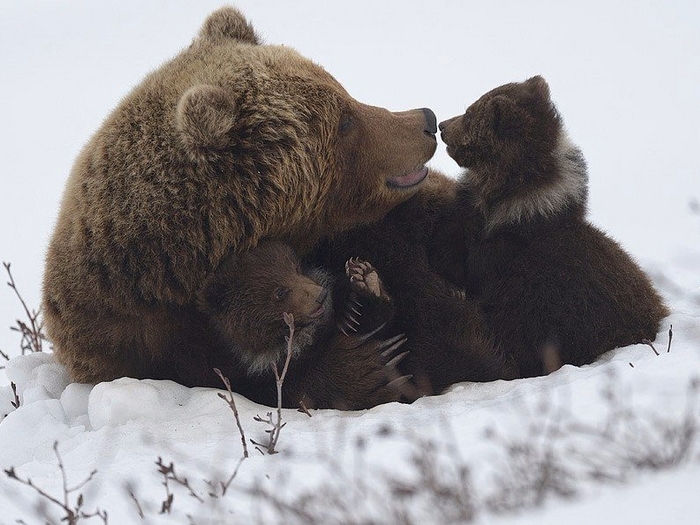 Reproduction and life expectancy
Reproduction and life expectancy
Bears become sexually mature in the third or fourth year of life, and some even later. In spring, adult bears of different sexes keep apart, avoid each other. Males walk alone, females - with cubs of the current or last year of birth. In May-June comes the rut period. However, females who have young cubs do not pay attention to males, since they will be busy raising offspring until next spring. According to zoologists, the so-called bear trees help to find each other during the rutting season, on which they leave odorous and optical marks - snacks, bark scrapes with claws, scuffs on trunks, deep dents from animal tracks in the ground, etc. At the same time, such trees help to avoid unwanted encounters in other periods, contribute to regulating the placement of animals on the territory, optimal use of feed. Almost all the trees marked by bears are located near the trail, as the animals prefer to walk along the trails. At the first meeting, the male and female walk in zigzags for a long time, slowly getting closer. They touch each other with a paw. After this acquaintance, the couple stays together. The mating of the animals is preceded by a courtship period that lasts half a month or more. At this time, the male relentlessly follows the female, constantly trying to get closer to her. The female always goes ahead and at first constantly snaps in response to the signs of attention of the male or runs away. It happens that the bear has several fans at once. This leads to minor incidents between males. The mating period lasts about a month.
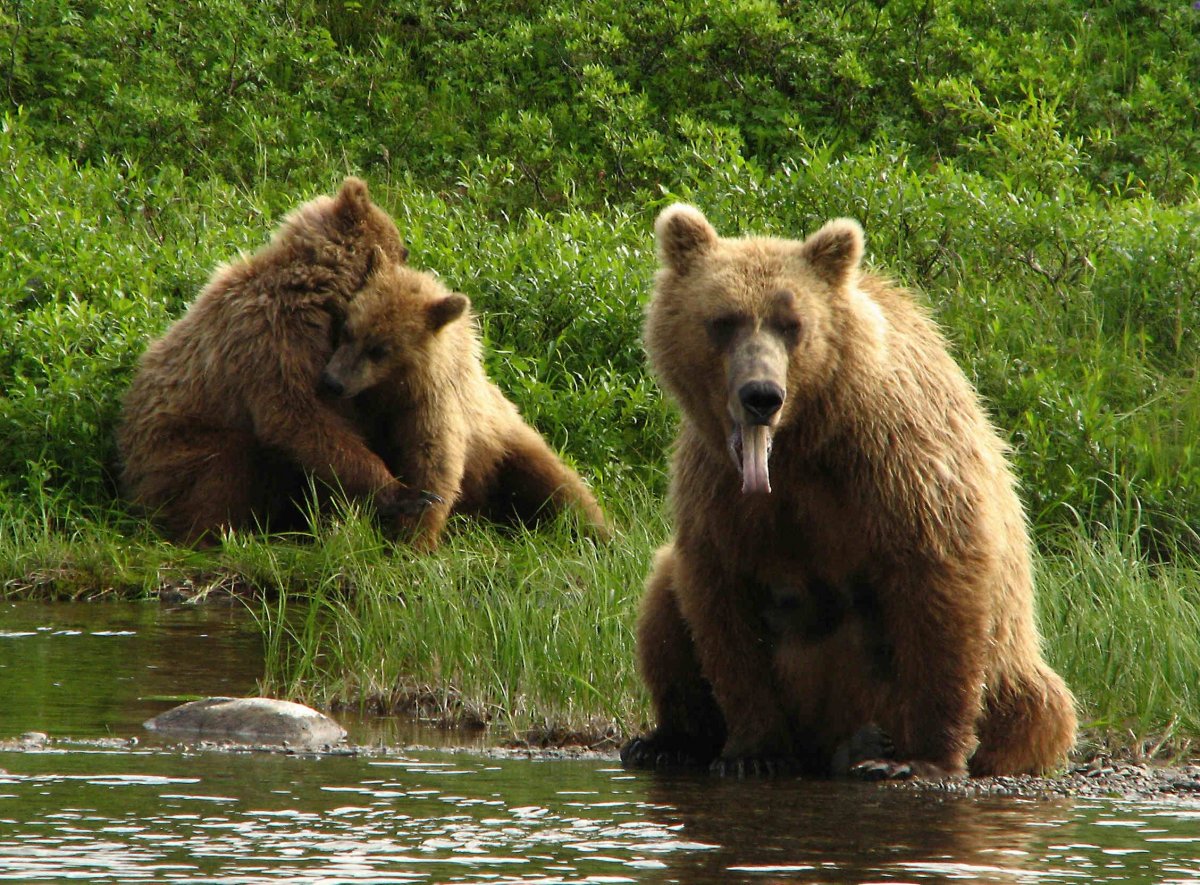 Seven to eight months after the rut, cubs are born. This happens already in the den in December or January. Cubs are most often born two. Less often - singles, triplets. Newborns are covered with sparse hair, are blind and deaf and weigh about half a kilogram. After half a month, the cubs have an auditory canal, the monthly cubs can already see. Baby teeth grow by three months, permanent in the one-year-old month. The family leaves the den when the offspring are already able to follow the mother on their own. The growth of the cubs at this time is the size of a small dog. They feed on mother's milk until about 4-6 months of age. Soon after leaving the den, the cubs begin to eat young grass. These days, the mother climbs a lot with her children on steep slopes and rocks, apparently teaching them this. The animals are very playful - running, tumbling, fighting. They annoy the mother - they bite her ears, neck, hang on her sides. The bear is quite patient with their pranks, often plays with them. When the cubs are 40-50 steps away from her, the mother is already worried and looks in their direction. Perhaps she somehow beckons them, because they suddenly rush to her with all their legs. During transitions, the mother pushes a straggler or a cub that has left the trail. In case of danger, the whole family runs away. One hunter told how in the autumn in the Dzungarian Alatau a bear was chasing his dog, and the cubs climbed a tree at that time. In autumn, the cubs grow noticeably and look well-fed. The first winter they spend in a den with their mother, the next year they fight off her during the rut and stay alone or in twos and threes. Sometimes they go to the den together. The female, expecting offspring, lies down in the den alone. Cubs in the second year of life are called lonchaks, in the third – pestuns. They sometimes join their younger brothers or other people's cubs, if the bear does not drive them away. Cubs are born once every two years and less often. If we take into account the small number of cubs in the brood, it becomes clear that bears reproduce very slowly. Out of every 20 cubs born, about 3 die for various reasons in the first year of life. It can be assumed that their mortality is high in the second year, since they remain unattended. It is known that the brown bear lived up to 47 years in the zoo. In natural conditions, life expectancy, of course, is less and depends mainly on the degree of persecution of a person.
Seven to eight months after the rut, cubs are born. This happens already in the den in December or January. Cubs are most often born two. Less often - singles, triplets. Newborns are covered with sparse hair, are blind and deaf and weigh about half a kilogram. After half a month, the cubs have an auditory canal, the monthly cubs can already see. Baby teeth grow by three months, permanent in the one-year-old month. The family leaves the den when the offspring are already able to follow the mother on their own. The growth of the cubs at this time is the size of a small dog. They feed on mother's milk until about 4-6 months of age. Soon after leaving the den, the cubs begin to eat young grass. These days, the mother climbs a lot with her children on steep slopes and rocks, apparently teaching them this. The animals are very playful - running, tumbling, fighting. They annoy the mother - they bite her ears, neck, hang on her sides. The bear is quite patient with their pranks, often plays with them. When the cubs are 40-50 steps away from her, the mother is already worried and looks in their direction. Perhaps she somehow beckons them, because they suddenly rush to her with all their legs. During transitions, the mother pushes a straggler or a cub that has left the trail. In case of danger, the whole family runs away. One hunter told how in the autumn in the Dzungarian Alatau a bear was chasing his dog, and the cubs climbed a tree at that time. In autumn, the cubs grow noticeably and look well-fed. The first winter they spend in a den with their mother, the next year they fight off her during the rut and stay alone or in twos and threes. Sometimes they go to the den together. The female, expecting offspring, lies down in the den alone. Cubs in the second year of life are called lonchaks, in the third – pestuns. They sometimes join their younger brothers or other people's cubs, if the bear does not drive them away. Cubs are born once every two years and less often. If we take into account the small number of cubs in the brood, it becomes clear that bears reproduce very slowly. Out of every 20 cubs born, about 3 die for various reasons in the first year of life. It can be assumed that their mortality is high in the second year, since they remain unattended. It is known that the brown bear lived up to 47 years in the zoo. In natural conditions, life expectancy, of course, is less and depends mainly on the degree of persecution of a person.
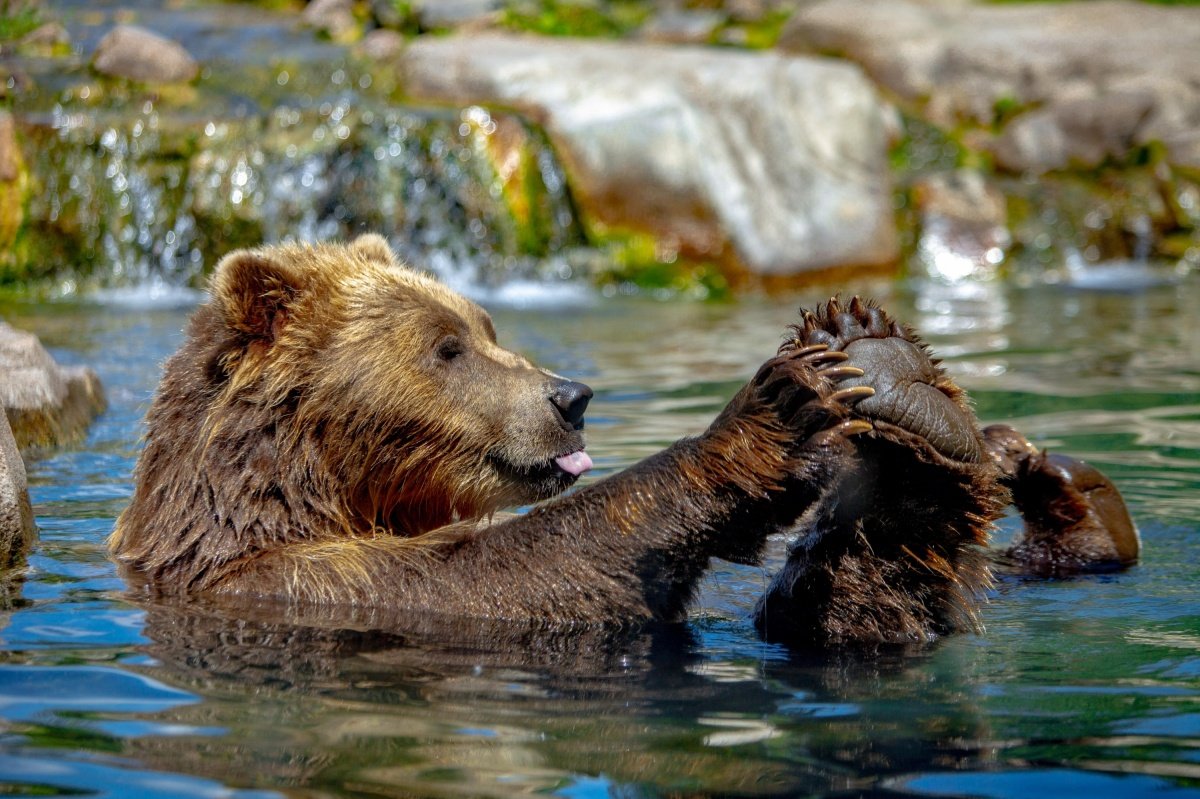 Enemies
Enemies
In the wild among animals, the Tien Shan brown bear has no enemies. The population size of these predators is affected by a reduction in the food supply. The only enemy of the Tien Shan brown bear is man.
